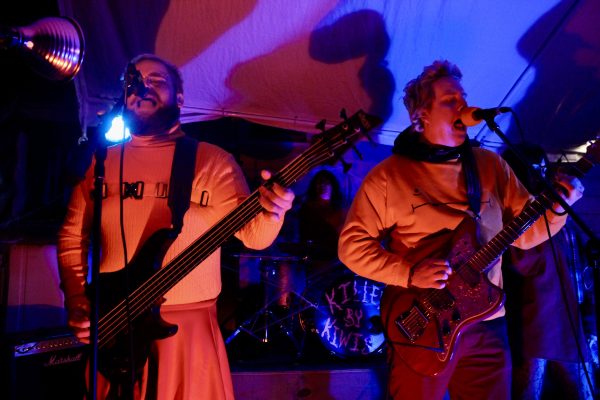The pseudonyms and lies of a professor’s family history
Professor O’Connor’s new book illuminates a tragedy from Minnesota’s—and her own—recent past.
December 11, 2019
The seed for creative writing professor Sheila O’Connor’s latest book, Evidence of V: A Novel in Fragments, Facts, and Fictions was first planted when she was just 12 years old.
That was the year her mother went to retrieve her own birth certificate and learned that she was adopted. The woman O’Connor knew as her maternal grandmother was in fact her great-aunt, and her biological grandmother was that woman’s younger sister, who had given birth at age 15 to a 35-year-old man’s child.
“I don’t know what transpired from there. I was not privy to that, because I was a child and didn’t actually realize any of it was happening,” O’Connor said.
As she got older, O’Connor learned more about the grandmother she never knew. Fictionalized as “V” in Evidence of V, she was sentenced to six years in a state school for “immorality” when her pregnancy became known. This predicament is outlined in the novel, but many gaps are filled in by O’Connor’s imagination to replace what history has forgotten.
“The book opens with a section called ‘A Book of Pseudonyms and Lies’,” O’Connor said. “The book has so much fiction in it that I did not want to use any real names… there’s more unknown than known. [My grandmother’s] escape from parole wasn’t even included in her file. I found it in a school ledger.”
V’s story is juxtaposed in the book with authentic court documents and records kept by the Sauk Centre facility where her real-life counterpart was interned. These files expose the reality that girls as young as eight were incarcerated until age 21 for “offenses” that no adult would be punished for—often for being a victim of sexual abuse.
“The reports of the school were difficult for me to believe,” O’Connor said. “It’s a very picturesque place. It’s very lovely architecturally, and that was important to the people who built it, just as that was important for many of the prison systems… you see it and you think, this looks like a very pretty place to live, which is exactly what they said in all of their media outreach. A pretty place can be deceptive in terms of what is happening inside.”
The facility was open until 1989. At that point, girls were no longer being sent there for “immorality,” but for minor offenses like truancy and violating curfew.
“Now, a lot of the juvenile detention facilities are privately owned, so it’s even harder to know exactly what goes on in them,” O’Connor said.
O’Connor, who is currently on sabbatical, has been devoting her time since Evidence of V’s Oct. 15 release to communicating with Sauk Centre survivors and their descendants and has spoken about the topic at numerous book-launch events. This semester, V has been studied in a number of Hamline’s literature and creative writing courses at both the undergraduate and graduate levels.
“Girls are still being put into juvenile detention facilities, many of whom are already victims of sexual abuse,” O’Connor said. “Some of this hasn’t changed as much as I would’ve liked.”




